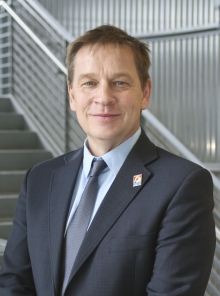Customer service is a priority for American companies. It’s hard to complete any business transaction without receiving an opportunity to rate the service received or comment on the positive or negative aspects of the experience. But what if the way businesses collect and interpret customer feedback is all wrong? What if corporate leaders are placing emphasis in the wrong areas?
 That’s a question a team of researchers explored in a long-term study, the results of which were published in Service Science, a peer-reviewed journal produced by the Institute for Operations Research and the Management Sciences (INFORMS). Erik Rolland, interim dean of the School of Engineering, was a principal investigator on that team and has received an honorable mention from INFORMS in the category of best publication for that journal.
That’s a question a team of researchers explored in a long-term study, the results of which were published in Service Science, a peer-reviewed journal produced by the Institute for Operations Research and the Management Sciences (INFORMS). Erik Rolland, interim dean of the School of Engineering, was a principal investigator on that team and has received an honorable mention from INFORMS in the category of best publication for that journal.
His paper, “Dual Rules for Service Evaluation,” proposes that there are two types of thought processes that make up how customers evaluate services they’ve received, and that the more complex process nets the most valuable feedback.
Simply put, those surveys asking for numerical rankings aren’t valuable when it comes to determining true customer satisfaction. But more importantly, Rolland’s research offers insight into how companies can improve their customers’ level of satisfaction.
“The question is if you want to improve, who do you listen to?,” he said. “Do you listen to the people who give low scores, the people who give high scores, or someone else?”
It turns out that the scores themselves may not matter. The key to getting valuable feedback is by engaging customers to go one step beyond circling numbers and making sure that they give thoughtful - not automatic - feedback.
“What we found is that to provide useful written comments, people need to either have an exceedingly positive experience or an exceedingly negative experience,” Rolland said. “But it’s the negative comments that may offer the most insight into what changes could make for a better experience.”
While this sounds logical, this type of feedback is found only in a small fraction of the data typically collected from customer surveys. Only 3.8 percent of the 41,085 surveys collected had responses that fit the negative evaluative mode.
Though the research is promising, more work needs to be done, Rolland said. The next step would be to offer a study that could control for the respondents shifting into negative evaluation mode to see if this really drives insightful customer feedback. If true, it’s possible that much of the data currently collected around customer experiences is useless as a guide for improving service satisfaction.
Media Contact: Lorena Anderson, University Communications



